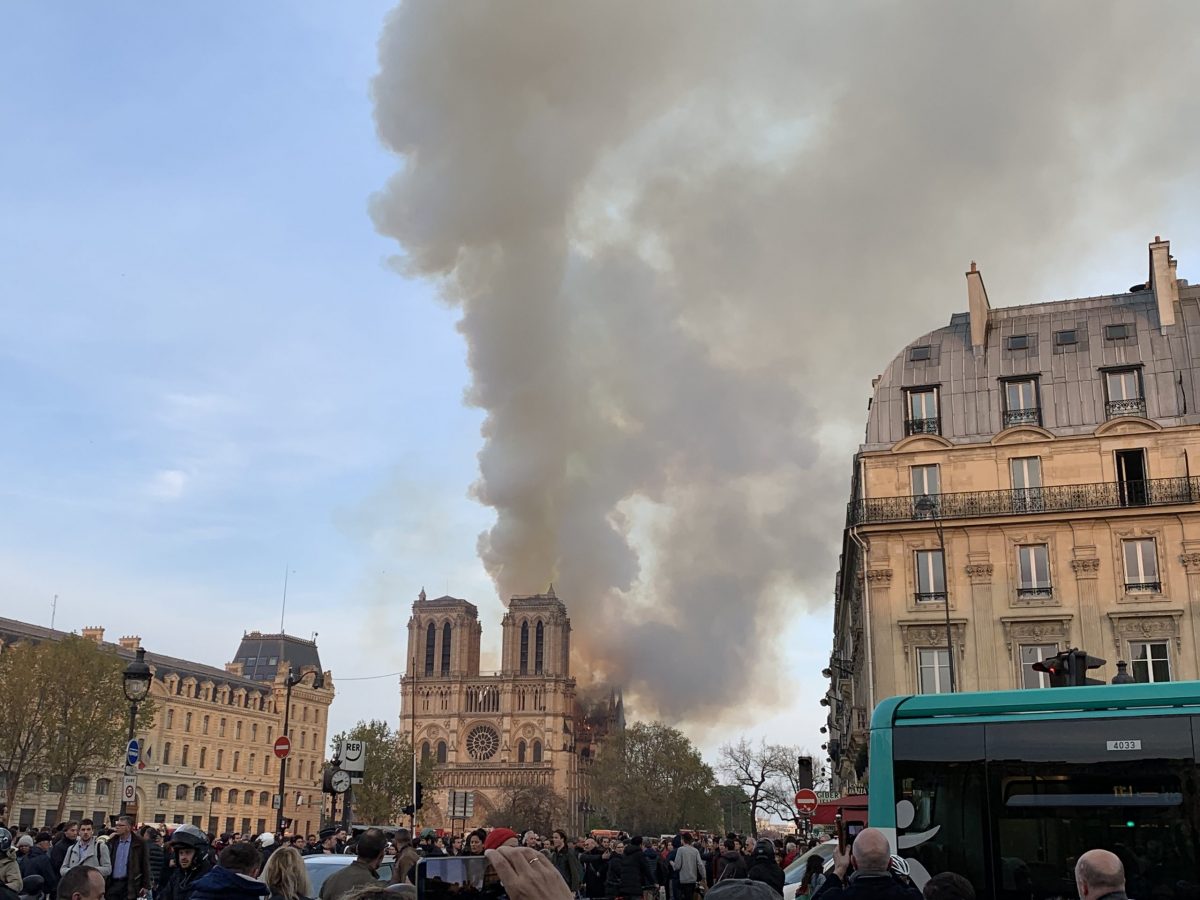By Richard Nevell, Wikimedia UK Project Coordinator
Shortly before 7pm on April 15 in Paris a devastating fire broke out in one of France’s most iconic buildings. The fire was extinguished after more than 12 hours, and while the stone walls still stood and movable artwork had been removed, the spire and roof had collapsed, causing extensive damage.
As a medievalist and someone who studies destruction I watched with grim interest, as did much of the world. The cathedral is a masterpiece of medieval art and architecture and welcomed 13 million visitors in 2018.
Within minutes of the first news reports, Wikipedia was being updated. At 7:19pm a short note was added to the article on Notre-Dame de Paris to say that it was on fire, and thirteen minutes later a separate page had been created to document the incident. Soon that page was available in more than 40 languages. At 8:21pm, Wikipedia’s Twitter account asked people to help document the event by taking photographs as it happened.
Lots of social media users commented that Wikipedia was quick to note that the building was on fire.
Wikipedia people are way too quick #NotreDame pic.twitter.com/LnD7yTJEkF
— Ryan (@_R13JM) April 15, 2019
On 15 and 16 April, 1.2 million people read the page about the fire, and 16 million read the pages about the cathedral across all language versions. They came to Wikipedia to find out what was going on, and what had been lost.
Elite medieval architecture was designed to convey power and inspire awe; in cathedrals it was also intended to demonstrate piety and create something eternal. Cathedrals contain effigies, burials, and monuments to people who have long since passed but who wanted their memory to live on. Over Notre-Dame’s 850-year history it survived wars and revolution and became a symbol of French identity.
The fire has also caused some reflection about the loss of heritage sites elsewhere. For some people, it has brought back memories of fires at York Minster in 1984 and Windsor Castle in 1992. Further afield, the number of people reading the English Wikipedia’s list of destroyed heritage increased 27,000%, and there were more changes to that page in one day than in the past six months put together. This wasn’t just the work of one person either, it was more than 30 people (most of whom hadn’t edited the article before) who wanted to help. The page was of course updated to include Notre-Dame, but it was far more wide ranging. Historic events were documented from a dozen countries including Argentina, Ireland, and Turkey. If there was any doubt this interest in the loss of cultural heritage was triggered by the events unfolding at Notre-Dame de Paris, there was a common theme of destruction by fire in the updated coverage on the page. The entries are a mix of accidental and deliberate loss, and each tells a story which impacts a community. With the events in Paris, that community is international in scale.
The buildings around us are impermanent, and even thick stone walls which have stood for centuries can come under threat without prior notice. In these situations, Wikipedia acts as a form of public documentation. While the news records events as they unfold and the human impact, Wikipedia is there to provide the long view, with a detailed history of the cathedral and more than 7,000 media files with which to explore its fabric.
Wikipedia itself is impermanent, though its contributors try to create something which will endure the test of time. In other parts of the world projects such as New Palmyra aim to catalogue endangered heritage, creating digital models. There is no way to recover what has been lost, and physical recreations must be handled sensitively, but it does at least help document what has been lost.
If you have taken pics or video of the fire at Notre Dame de Paris, please upload them to @WikiCommons: https://t.co/wiXL223FUZ for use on Wikipedia & under #OpenLicence #NotreDame
— Andy Mabbett (@pigsonthewing) April 15, 2019
If you have images of the Notre-Dame, or any other heritage sites, please do consider uploading them to Wikimedia Commons. From there they can potentially reach an audience of millions and the whole world can benefit.







